Photo Restoration FAQ: Common Questions About Photo Restoration and Photo Colorization in 2025
In this article we will answer the most common questions about the Photo Restoration and Colorization! There will be answer all of your questions that we’ve gathered from our clients over the years in this comprehensive article.
If you wouldn’t find answer to anything, you can ask us by filling the quote form here!
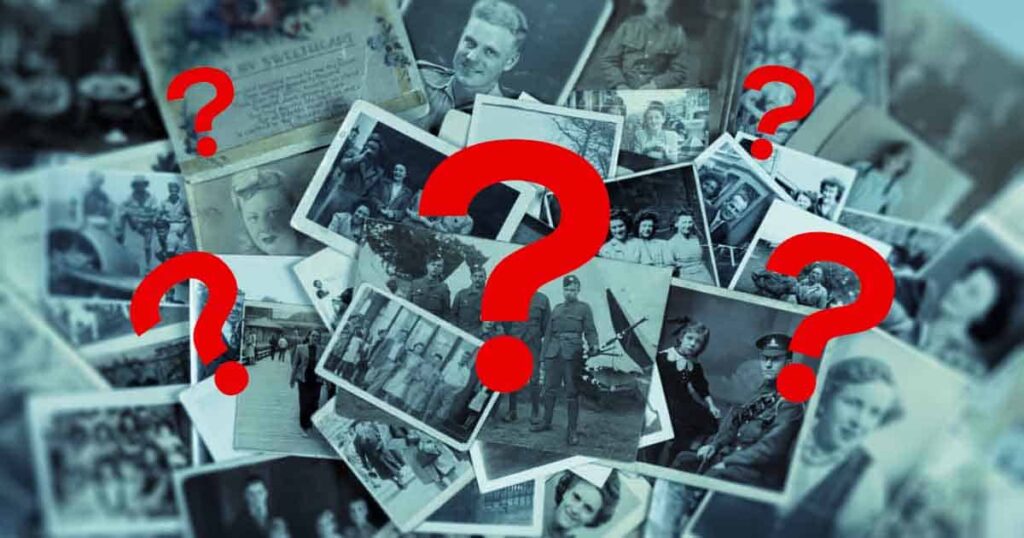
Whether you’re a photography enthusiast looking to learn more about what I photos restoration or simply looking to preserve your family’s heritage, we’ve got you covered because we’ve answered nearly every question we’ve ever received about it. Let’s get this party started!
Just a quick reminder:
- Check out this tutorial if you want to learn how to restore photos in Photoshop and a bunch of useful Photoshop tricks.
- Check out this tutorial if you want to learn how to colorize photos manually and discover the secrets behind it.
- And if you want to use AI photo colorization and then manually fix any issues it has with free Photoshop alternatives, check out this article.
Frequently Asked Questions about Photo Restoration Services
Because photo restoration is a much broader, more complex, and interesting topic, let’s start by answering the most frequently asked questions about it!
Q: What is photo restoration, and how does it work?
Photo restoration is a process where we repair and enhance old, damaged, or faded photographs, giving them a new lease on life. Skilled photo restoration artists use digital tools to carefully mend cracks, tears, and discoloration, aiming to preserve the original essence of the photo while improving its overall appearance.

We also have a comprehensive article explaining what photo restoration is and how it works!
Techniques and sub-services in photo restoration include
Here is the list of everything that is usually included in packages of photo restoration services.
- Damage restoration
- Missing part recreation
- Color correction
- Photo colorization
- Detail sharpening
- Photo enlargement
- Photo framing or reframing
If you’re not sure what some of these terms mean, we’ll explain everything in the questions that follow!
How does photo restoration work?
If you want to have your photos restored, the procedure is very straightforward. As a client, we will explain the process to you both before and after you receive your restored photos.
Before photo restoration:
To get your photo restored by professional photo restoration artist just follow these steps.
- Scanning the Photo: Scan the original photo at a high resolution. This creates a digital copy that you can work on without risking further damage to the original.
- Get an Assessment: First, have your photo checked by a professional to determine the condition of the old photo. Determine the extent of the damage, including fading, scratches, tears, and discoloration.
- Place an Order: After scanning your photo and receiving a free quote that states that you photo can be restored, you can just follow professional advice and place an order!
After receiving restored photo:
Amazing, now that you received your photo back after restoration you have few options of what will be next!
- If photo looks perfect: Accept the final file and simply enjoy it, print it, and share it online! Save the restored image in a high-resolution format. Depending on what you want, you can print the photo or share it digitally.
- If the photo looks good but needs to be tweaked: Request any changes or edits to the image until it is perfect. You are backed up by unlimited free revisions guarantee!
- If the photo is unusable and cannot be improved: In this case, the client may request a free second photo restoration and colorization, or a refund. Reputable photo restoration services, such as Rememorie, are so confident in their abilities that they offer a risk-free refund guarantee.
These are the most important options, but photo restoration also includes an endless number of other techniques and services with unappealing names but incredible improvements to the final restored photos!
Q: Can you briefly explain the process of restoring old photos?
Of course! When you submit your old photo for restoration, expert artists assess its condition and determine the best approach. They delicately remove blemishes, repair tears, restore missing parts and adjust or recreate colors as needed.
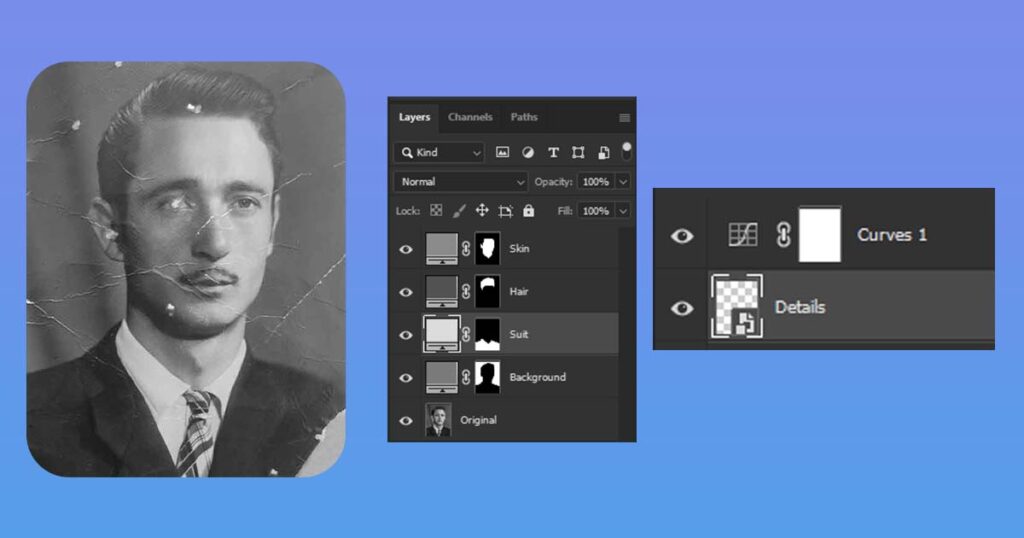
The process involves a combination of advanced software tools and artistic touch to achieve optimal results.
From beginning to end, here’s how photo restoration services work:
- Photo received: Artist receive your old photo and begin working on them (along with any specific instructions you provided).
- Open it in Photoshop: The photograph is being imported into Photoshop.
- Photo framing: Artist crop any extra pixels from a photo, such as a white border around a scanned image, or anything else, such as fingers, a table, or anything else if you photographed it.
- Damage restoration: Restorer repairs any type of damage to your photo, from dust or scratches to restoring parts of the image that have been turned out and are completely missing.
- Issues correction: Additionally, restorer corrects any flaws in your photos, such as stains, shadows, or reflections, overly dark or overly bright areas, and so on.
- Color correction: When all of the damage and issues have been repaired, it is time to perform color corrections and color balancing.
- Photo colorization: We can colorize your black-and-white photos using our experience and knowledge of color theory and colorization. We can also use any reference photos you provide to achieve even better color accuracy!
- Checking for mistakes: After all of the colorization and restoration is completed, the artist will usually take a short break before returning with a “fresh eye” to spot and fix any issues that they may have missed.
- Detail sharpening: After all of the manual and precise work is completed, artists will use advanced softwire and AI tools to enhance and sharpen their work.
- Final overview: Another comprehensive overview of the restored photo, polishing and sharpening of the image’s small details.
- Done: Your photo is finished and you will receive your digital file soon
Once restored, we provide you with a digital copy of the renewed photo for your approval. Even with such care, photos may require changes later, either due to an artist’s oversight, a client’s request, or simply because the original photo was difficult.
Q: What are the benefits of restoring old photos?
First off, there’s the sentimental value – these photos are like time capsules, holding memories of people, places, and moments that might have faded over time. Bringing them back to life can really take you on a trip down memory lane.
Then there’s the preservation aspect. Old photos tend to deteriorate with age, and restoring them digitally can help prevent further damage. It’s like giving them a new lease on life, and you’re essentially safeguarding your family history for future generations. Imagine being able to pass down these beautifully restored photos to your kids and grandkids!
At the end, it’s not just about preserving the past – it’s also about rekindling connections. Think about all the stories behind those photos. When you get them restored and colorized, you’re opening up opportunities for conversations with family members and friends. You get to hear the stories behind those beaming smiles, the crazy hairstyles, and the old-fashioned outfits.
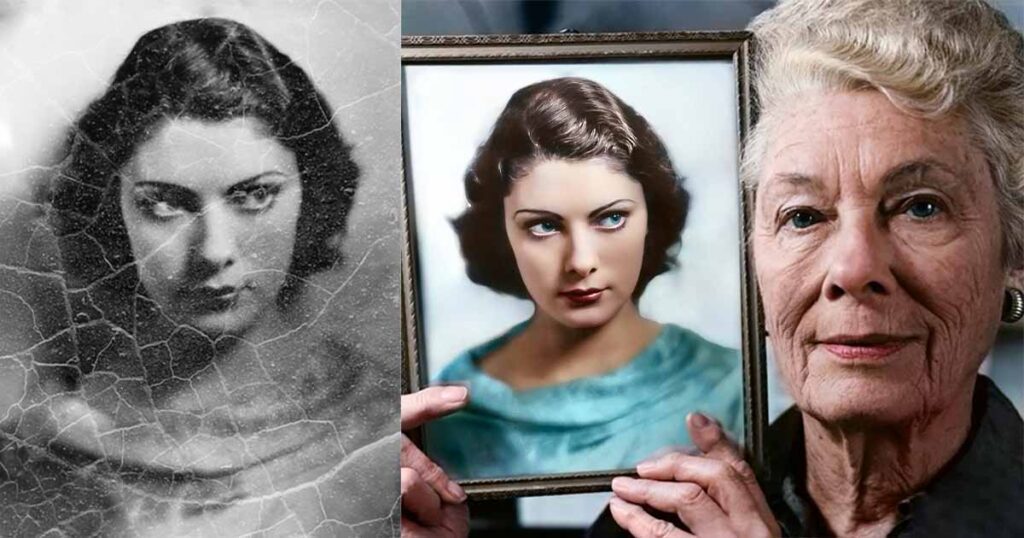
So, restoring old photos isn’t just about fixing pixels – it’s about treasuring the past, preserving memories, connecting with loved ones, and unleashing your inner creative geek. If you’ve got some old snapshots lying around, you might just be sitting on a goldmine of stories waiting to be rediscovered!
Q: Are there any prerequisites for getting photos restored?
Anyone who has old photos that need to be cared for and improved can benefit from restoration services. There are only two prerequisites, and only one of them is required!
Digitize your photo (Required)
Scan your photo with a scanner or use your phone camera to make a digital copy. This step is required because it allows you to share your digital photo with the artist online so that they can restore and colorize it for you instead of working with the original, printed, and very fragile photo.
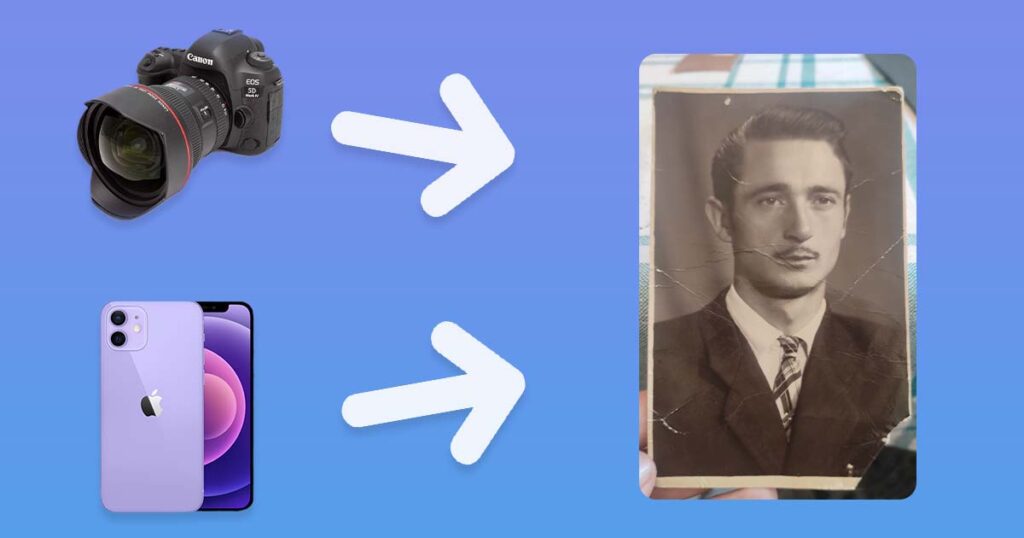
Most artists used original photos in the past, so you had to mail originals to the studio, pay for both sides delivery, and then get your mail back with both original and restored photos. Nowadays, to save time and money, and to avoid the risk of losing an original photo during the restoration or transition process, all artists work only with digital copies, aka just photos of originals!
Get a Quote (Optional)
Almost any photograph can be improved slightly, but not all photographs can be restored to perfection.

It is an optional step, but we strongly advise you to receive a free quote to avoid any potential disappointment as a result of receiving a photo that you did not like because the original could not be restored!
That’s all. There are no other requirements besides these two!
Q: How can I assess the condition of my old photos to see if they need restoration?
Even if you know nothing about photo restoration or old photographs, it is usually simple to assess the condition of your old photographs. Examine the fabric for fading, discoloration, cracks, tears, and other visible damage.
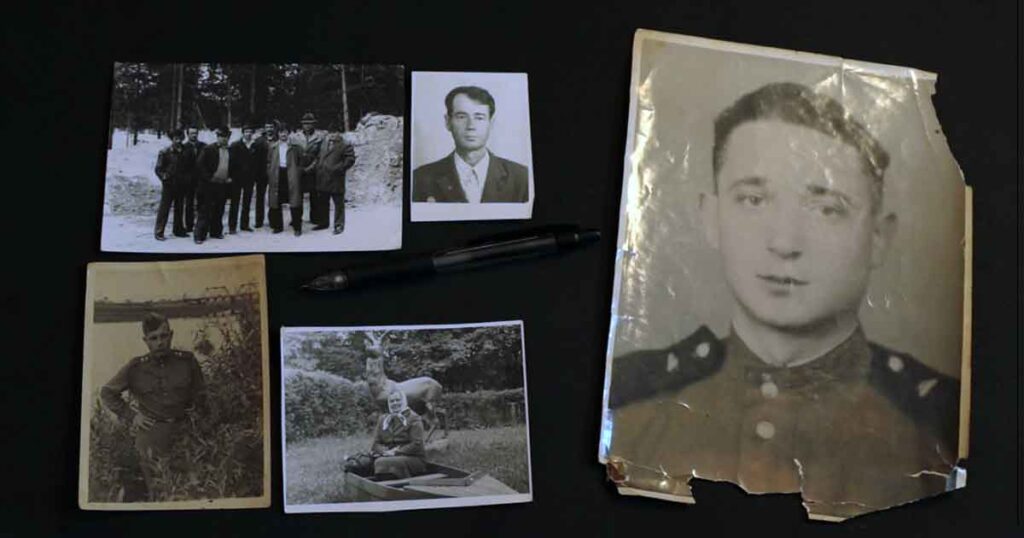
Although a professional assessment is recommended, if you want to check it yourself for now, here is a short list of issues that you may be able to spot yourself!
- Look for Fading: Check if colors have faded or changed over time. If the photo looks washed out or discolored, restoration could help bring back the original vibrancy.
- Inspect Physical Damage: Examine the photo for scratches, tears, or creases. If these flaws are distracting from the image, restoration might be beneficial.
- Check for Mold or Stains: If there’s mold, mildew, or noticeable stains, these can worsen over time. Restoration can prevent further deterioration.
- Assess Image Quality: Look closely at fine details, such as facial features. If the image is blurry, lacks sharpness, or has lost important details, restoration could improve clarity.
- Evaluate Overall Condition: Consider the photo’s sentimental value and its role in your family history. If it’s a cherished memory or part of your heritage, restoration could help preserve its significance.
If you notice any of these issues, it’s a good indication that your photo could benefit from restoration.
Q: Are there different types of photo restoration services available?
Yes, to a point. These services, or to be more specific, packages, differ not in terms of what they are meant for, but rather in terms of what is induced in them, which means how much time and effort artists can put in, and how good the final restored photo will look!
Photo Colorization is the only genuine and distinct service. Photo colorization is a distinct service that is rarely included in photo restoration and thus treated separately. We also have a comprehensive article that will teach you everything you need to know about photo colorization!
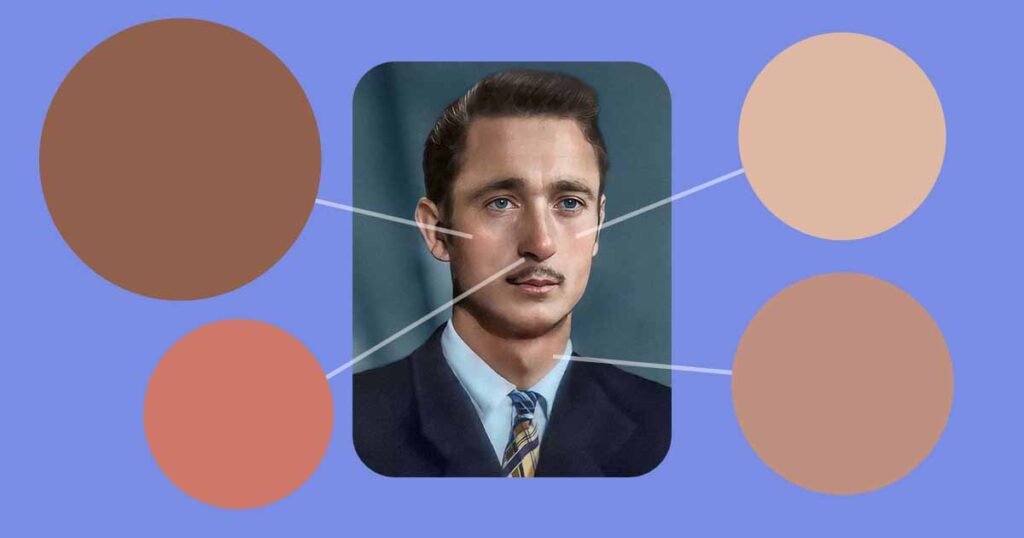
Restoration services are typically classified based on the difficulty of the work (how damaged the original photo is) or the services and techniques included (how good the final results should look).
Color correction and minor blemish removal are examples of simple fixes, while more complex restorations include repairing severe damage and intricate details.
Examples of photo restoration packages we have:
- Standard: The most affordable option, which includes all of the fundamental photo restoration and photo retouching techniques. Suitable for photos with minor damage or if you want to make minor changes to the image.
- Advanced: It includes detail sharpening and better overall results in addition to what is included in previous package. Suitable for images that have moderate damage or if you want to make significant changes to the image.
- Premium: Everything from the previous options is included, as well as photo enlargement and meticulous manual detail reconstruction. It also includes photo editing, so if you need to add or remove something or someone, you’ll find it here! Needed for photos that have been badly damaged or that require the best possible outcome!
There are no “types” of photo restoration services, only tariffs, as previously stated. The cheapest rate typically has the lowest value, so it includes fewer features and costs more per feature.
While the best value package usually includes all possible features at a lower price per feature!
Q: Can photo restoration AI truly restore old photos in 2025 without the work of an actual artist?
While AI-powered photo restoration tools have made significant advances in recent years, particularly since their boom in 2020, and now in 2025, they still fall short of the capabilities of skilled human artists. This is why:
Lack of Contextual Understanding: While AI algorithms analyze and restore images based on patterns and data from a wide range of images, they lack the deep contextual understanding that human artists possess. Humans can use their cultural and historical knowledge to make accurate color, lighting, and detail decisions that may not be obvious from the image itself.
Complex Restoration Scenarios: Tears, missing portions, and severe discoloration can occur in old photographs. Human artists can modify their techniques to address the unique challenges presented by each image, whereas AI may struggle with unusual or complex restoration scenarios.
Artistic Intuition: Photo restoration is about preserving the emotional and aesthetic qualities of the original image as well as technical accuracy. Human artists have artistic intuition and creativity, allowing them to make subjective decisions in order to capture the essence of the photograph, whereas AI may prioritize technical perfection over emotional resonance.

Advantages of Photo Restoration AI:
Let’s start with the benefits of AI photo restoration.
- Free or low-cost: You can usually use these tools for free or for a very low cost, allowing you to experiment with them extensively and use one to restore an entire album of photos for a few dollars.
- Quick and simple: Most of these tools require two things from you: uploading photos and waiting up to 60 seconds.
Disadvantages of Photo Restoration AI:
Now, let’s talk about disadvantages of photo restoration AI.
- Hidden Fees: We mentioned that these tools are either free or very cheap, and here’s why. Often, you can only download with a watermark or in a very small size, or both. If you want a full size, you must purchase these photos, which can quickly add up in price because AI websites typically charge you for each iteration of the image.
- Basic Capabilities: Typically, these AI tools are advertised as being able to make your photos look amazing and repair any damage they may have, but the best they can do is remove dust or very minor scratches, and they cannot repair any torn out parts, missing parts, or so on.
- Low Accuracy: Unlike real human artists, AI cannot feel emotions, so it ignores the details of your photo and simply follows an algorithm, resulting in very low accuracy of results.
- Low-Quality: Finally, even if you have your image restored by AI, all you will get is very casually removed dust and scratches that cause distortion all over the image, as well as extremely artificial looking details, particularly of the face.
While AI-powered restoration tools can be useful for basic touch-ups and colorization, they cannot replace the expertise, creativity, and nuanced understanding that human artists bring to the process of restoring old photographs.
Q: What is the difference between photo restoration and photo retouching or photo editing?
Photo restoration, retouching, and editing are all related processes, but they each have their own focus and goals. They frequently interact with one another and can be included in one another, but they can also be separate processes! Feeling even more lost now? Don’t worry, let us to explain!
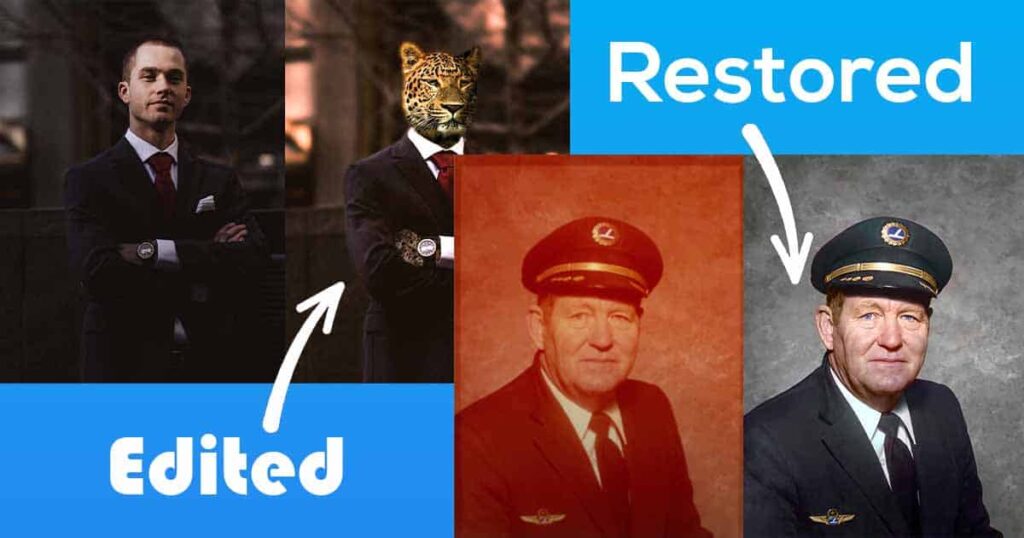
Photo Restoration: Photo restoration is concerned with repairing and preserving old or damaged photographs. It entails tasks such as repairing tears, removing scratches, correcting color fading, and reconstructing missing image parts.
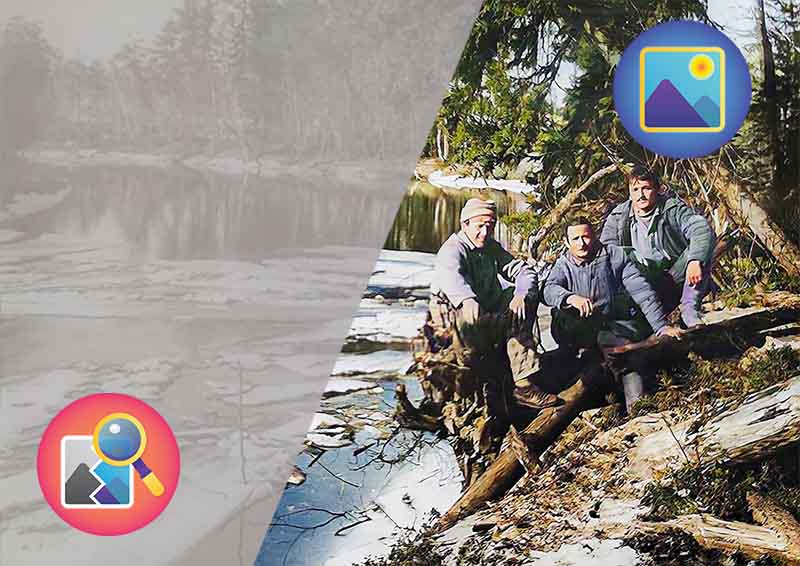
The goal is to restore the photo to its original condition while preserving its historical and sentimental value.
Photo Retouching: Photo retouching, on the other hand, is primarily concerned with improving an image’s aesthetic quality. This may entail adjusting lighting, smoothing skin, removing blemishes, and enhancing details to achieve a polished and visually appealing result.

To create flawless and idealized images, photo retouching is frequently used in portrait photography and fashion.
Photo Editing: Photo editing is a broader term that encompasses both restoration and retouching, as well as other alterations like adding text, changing backgrounds, and manipulating the composition.

It’s a versatile process used to achieve a variety of creative and practical goals, ranging from simple adjustments to complex image manipulations.
While all three processes involve working with images, photo restoration focuses on repairing and preserving old photographs, photo retouching improves the appearance of newer photographs, and photo editing includes a variety of modifications and adjustments to photographs for various purposes.
Q: How do I choose a reliable online photo restoration service?
Selecting a reliable service involves checking customer reviews, examining before-and-after samples, and looking for professionals who demonstrate a solid track record of delivering high-quality results.
- Research and Reviews: Look for previous customer reviews and testimonials online. Positive feedback and experiences can point to a trustworthy service. Check out platforms like Google Reviews, Trustpilot, or photography-specific forums.
- Sample Work: Examine the restoration service’s before-and-after samples. This will give you an idea of their skill level and work quality. Check that their restoration style matches your expectations. If you don’t like the previews that the service shares, you won’t like the restored photo either.
- Experience and Expertise: Look into the background and experience of the restoration service. A service that has a proven track record of successfully restoring various types of photos is more likely to produce satisfactory results.
- Communication: Contact the service to see how responsive they are and how willing they are to answer your questions. To ensure that your specific needs are understood and met, clear communication is essential.
- Privacy and Security: Check that the service has a strict privacy policy in place as well as secure methods for sharing and receiving your photos. You want to know that your images will be handled with care and will not be misappropriated.
- Pricing and Turnaround Time: Compare prices for various services, but keep in mind that quality work may be more expensive. Inquire about the expected turnaround time for your restoration project as well.
- Guarantee or Refund Policy: Check if the service offers any guarantee of satisfaction or a refund policy in case you’re not happy with the final result.
- Professionalism: Look for professional characteristics such as a well-designed website, clear terms and conditions, and a clear process for submitting and receiving your restored photos.
It’s also important to choose a service that aligns with your restoration needs, whether they involve repairing minor imperfections or extensive damage.
What factors should I consider when selecting a service provider?
All of the above factors, or at least the majority of them! There are many of them, so consider factors such as their expertise, the quality of their previous work, the turnaround time, and their communication when selecting a service provider. A responsive and attentive service will ensure a smooth and satisfying restoration experience.
What qualifications or expertise should I look for in a photo restoration artist?
Look for services with a proven history of restoring photos similar to yours. Experience, attention to detail, and a portfolio showcasing their restoration skills are key indicators of a capable artist.
Q: Is it possible to restore any photo?
No, unfortunately, some photos cannot be restored because they are too damaged. Some companies or artists may look at them and tell you that they can restore them, but this is not true. If most of the details are simply removed, you will be left with an image that looks like this in the artist’s imagination and supplied by his skills.
Even if the image itself appears to be excellent, it will have little to no accuracy and will not contain the original moment captured on it, but rather an artistic interpretation of it and the people captured on it!
Is there some types of damage that can’t be restored?
It is not only about the type or amount of damage in your photo, but also about whether or not important areas such as the face, hands, and so on have been affected or destroyed. Water damage, blurred or missing parts are examples of damage types that, in some cases, can be restored relatively easily.
On the other hand, some very basic types of damage, such as scratches or even dust, that cover an important area of the photo may make full restoration impossible, or at the very least significantly reduce the final accuracy.
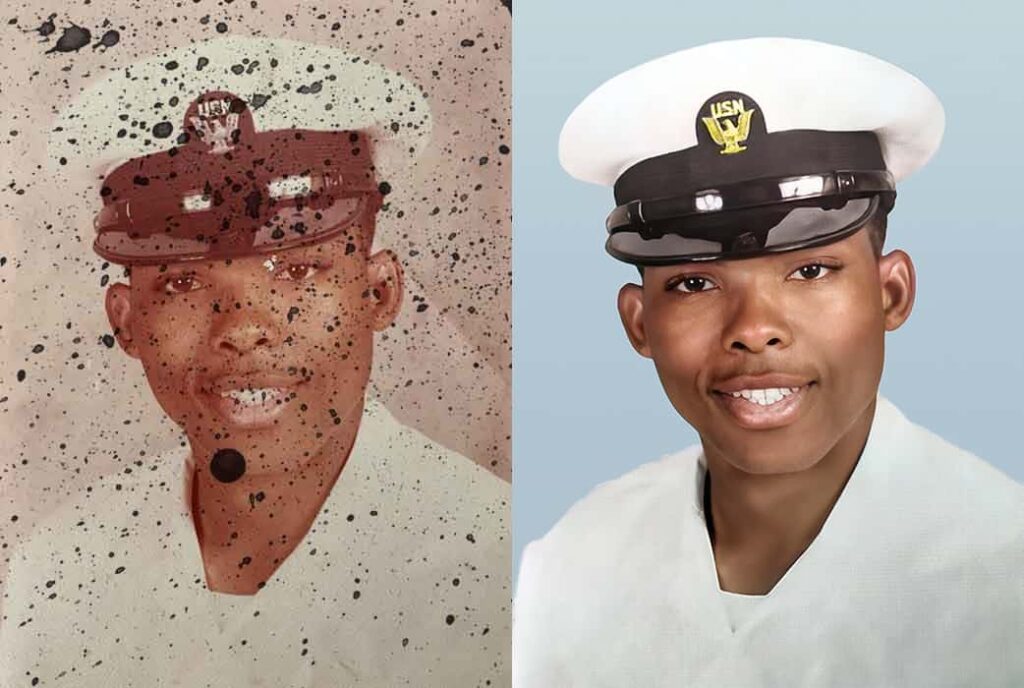
As previously stated, even if you have no experience with photo restoration, you can usually tell how damaged a photo is just by looking at it. However, some damage that appears to be simple to repair may turn out to be impossible to repair. Alternatively, some damage that appears to be irreversible can be restored and made to appear as if it never existed in the first place.
So, the best way to find out if your photos can be restored is to request a free quote!
Q: What is the typical turnaround time for photo restoration projects?
Turnaround time varies depending on the complexity of the restoration. However, we aim to provide you with a restored digital copy within a few days to a couple of weeks.
Here are the results of a turnaround time analysis of over 50 online photo restoration services:
- 1-4 Business Days (Exceptional)
- 5-8 Business Days (Normal)
- 8-14 Business Days (Slow)
- 15+ Business Days (Extremely Slow)
Here is a breakdown of our turnaround time. Orders from 2017 to 2025 are included in the data:
- 79% of photos are restored within 1-2 days
- 17% of photos are restored within 3-4 days
- 4% of photos take 5+ days to get restored (we will warn you in advance)
More intricate restorations may take slightly longer, but we prioritize delivering quality results within a reasonable timeframe.
Q: What is the cost range for photo restoration services?
The cost of restoration varies based on factors such as the level of damage and the complexity of the restoration required. Our pricing is competitive and reflects the level of expertise and dedication our artists bring to each project.
Q: Do I retain copyright ownership of the restored photos?
Yes, you retain complete ownership of the restored images. We respect your rights and make no claim to ownership or usage rights over the images you supply.
If you do not want them to be posted and shared online, you do not need to say anything or explain why, because we do not share them by default. We will only share these photos online if you give us permission.
Frequently Asked Questions about Photo Colorization Services
We hope that we have addressed all of the most important photo restoration questions above. Now, let’s go deeper and find out the answers to the most frequently asked questions about photo colorization services!
Q: What is photo colorization and how does it work?
Photo colorization is the process of adding colors to black-and-white or sepia-toned photographs. It’s like giving your old photos a new coat of paint, bringing them to life and making history feel more relatable.
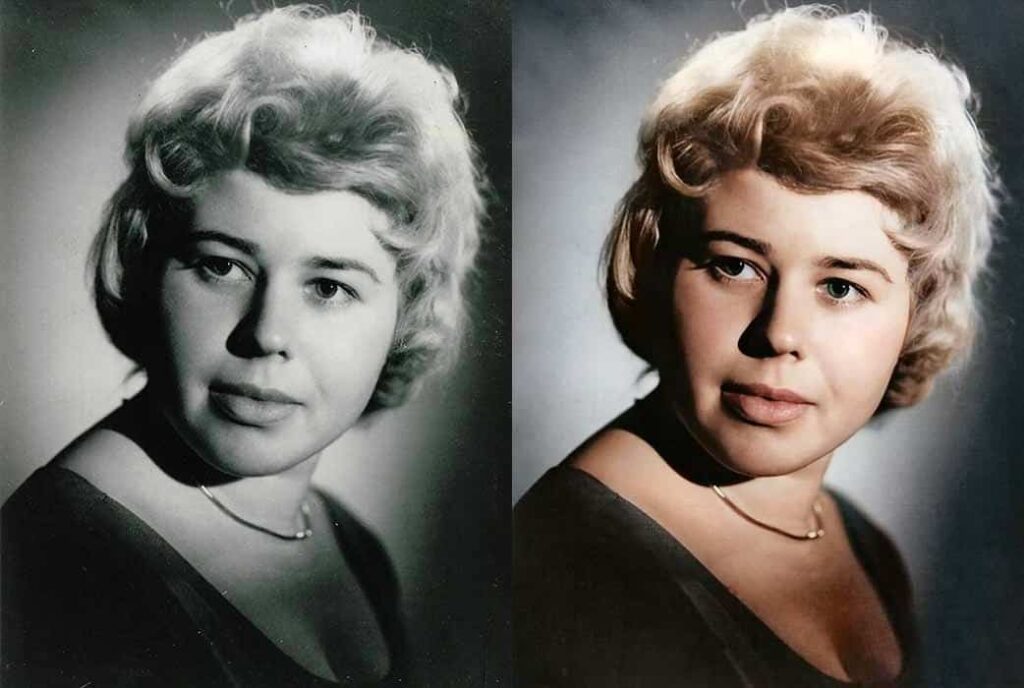
How does Photo Colorization work?
Firstly, let’s have a very simple version of what photo colorization artists need to do and understand to restore photos with maximal possible accuracy!
Research and Reference: Colorization artists frequently begin colorization by researching the time period and objects in the photograph. They look for color references in historical records, objects, and even personal accounts to ensure accuracy.
If you have information about the location and time the photo was taken, or if you have color photos from the same time period, please share them with us; it will help us achieve better precision for color selection!
Apply Color Theory: Understanding how light interacts with various objects to produce highlights and shadows is required for this step. It’s similar to understanding the play of light on a canvas, but instead of selecting colors based on artistic preference, this information is used to reverse engineer and guesstimate the original colors present in the image.
Digital Painting Magic: Using software like Photoshop, color theory and refences, our artists meticulously apply colors to the photo. We use various brushes and techniques to add colors, making sure to match the historical accuracy.
As mentioned above, these steps are mostly applicable for realistic photo colorization approach. But, not everyone wants their photos to be 100% historically accurate, and would prefer to have some artistic touch to color on these photos, similarly as we have filters and photo editing affection modern photos!
So, to understand it better here are 3 styles of photo colorization.
Styles of Photo Colorization
Each of these types has its own charm and purpose, and the choice often depends on the desired outcome and the preferences of both the artist and the person commissioning the colorization.
- 1. Realistic Colorization: This style focuses on achieving the most accurate and lifelike color reproduction possible. The goal is to make the colored version of the photo appear as if it was originally taken in color. Artists meticulously research historical references and use their knowledge of lighting and colors to create an image that feels natural and authentic.
- 2. Artistic Colorization: Artists in this style take a creative approach, intentionally deviating from strict realism. They may use artistic interpretation to add colors to the photo that enhance the mood or storytelling. This could include using bright or unusual colors to elicit emotions or highlight specific elements in the image.
- 3. Mixed Colorization: As the name suggests, this style combines both realistic and artistic approaches. The main idea here is to strike a balance between accuracy and creative expression. The base colors are chosen realistically, while certain elements might be stylized for visual impact. This approach allows for a blend of historical accuracy and artistic flair.
Whether you’re aiming for a faithful historical representation, an artistic reimagination, or a combination of both, photo colorization offers a range of options to suit different tastes and intentions.
Q: How do artists choose colors for photo colorization?
By understanding color theory, using references provided or found on the internet after research, utilizing original lighting and color reflecting situations, and then simply making his best guess. Color selection in photo restoration is a complicated subject, so if you are really curious check the article. Here, we will try to it simply.
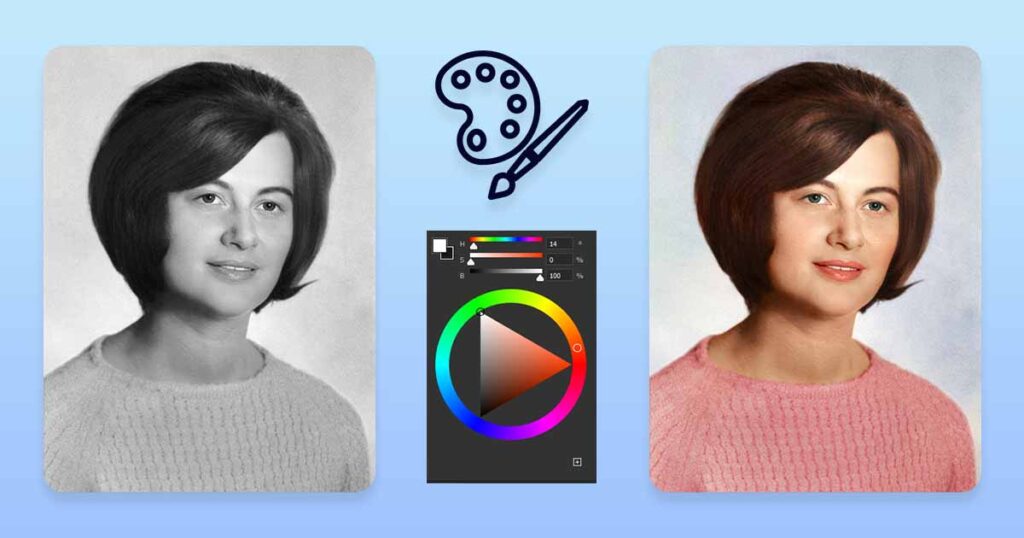
We’ll divide it into realistic and artistic colorization approaches because they’re so different. A mixed photo colorization approach will always be somewhere in the middle, and it may use different points depending on the photo colorization service.
Realistic photo colorization:
- Use References: Get references or information about colors from the client, or find references and copy colors from them.
- Color Theory: Understand and apply color theory to adapt colors from reference photos to the lighting situation of the photo being colored.
Artistic photo colorization:
- No References: If you want the best-looking, most vivid, artistic results, references will be a problem, not a solution.
- Color Theory: The same color theory that was used for realistic colorization, but now the emphasis is on how well colors look with each other and how beautiful the final image will be!
It should explain all of the major distinctions between these approaches. As a result, references are essential for realistic colorization but useless for artistic coloration. Mixed colorization is something in the middle of these two worlds, and it produces the best results because it keeps all of the important details colorized accurately while allowing for some creativity to make other, less important details much more beautiful!
Q: Can AI colorization make old photos more realistic and beautiful?
AI photo colorization tools are far more advanced and produce better results than AI photo restoration tools. They are still far from perfect, with many limitations in terms of accuracy, color selection precision, and final image quality.
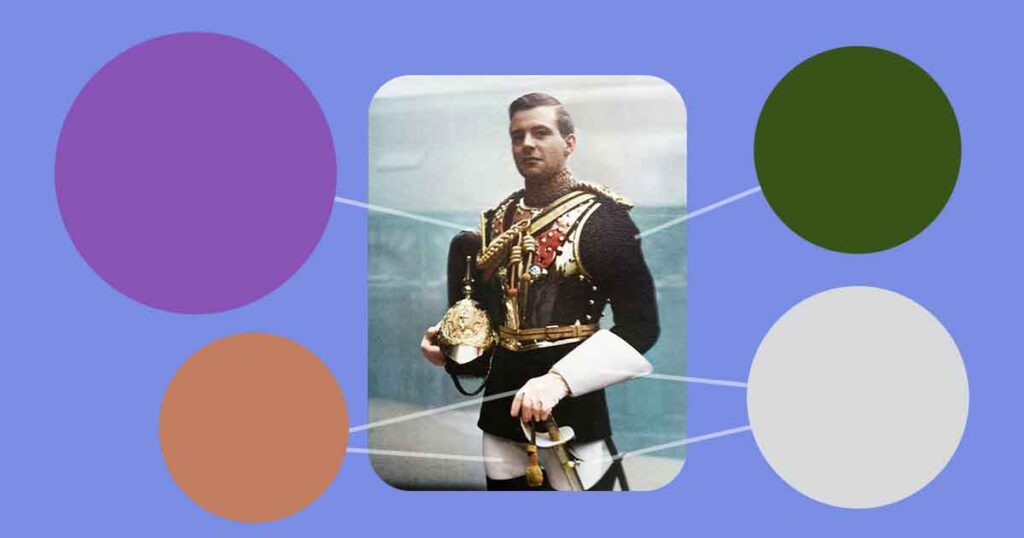
Advantages of Photo Colorization AI:
Here are main benefits of AI colorization restoration.
- Free or low-cost: You can usually use these tools for free or for a very low cost, allowing you to experiment with them extensively and then use your favorite AI tool to colorize an entire album of photos for a few dollars.
- Quick and simple: Most of these tools require two things from you: uploading photos and waiting up to 60 seconds.
Disadvantages of Photo Restoration AI:
While being much better than photo restoration AI, photo colorization AI still has similar weaknesses.
- Hidden Fees: We mentioned that these tools are either “free” or very inexpensive, and here’s why. You can frequently only download with a watermark or in a very small size, or both. If you want a full-size image, you must buy it, which can quickly add up in price because AI websites typically charge you for each iteration of the image.
- Low Accuracy: Because AI, unlike real human artists, cannot feel emotions or see the borders of the face, eyes, hair, lips, and so on, it ignores all of these details, resulting in stains of random color, missed colorization of some parts, and so on.
As previously stated, AI colorization tools are far more advanced than photo restoration tools, and if you’re looking for the best photo colorization AI, check out Palette.fm.
- Check out this tutorial if you want to learn how to use free AI photo colorizations and perfect them with the help of a free Photoshop alternative.
Q: What are the benefits of photo colorization?
Photo colorization is an excellent method for bridging the gap between the past and the present. We can breathe new life into cherished memories and historical moments by infusing old black-and-white or sepia-toned photographs with vibrant colors. This process goes beyond simple restoration; it’s like stepping into a time machine that transports us back to those moments.
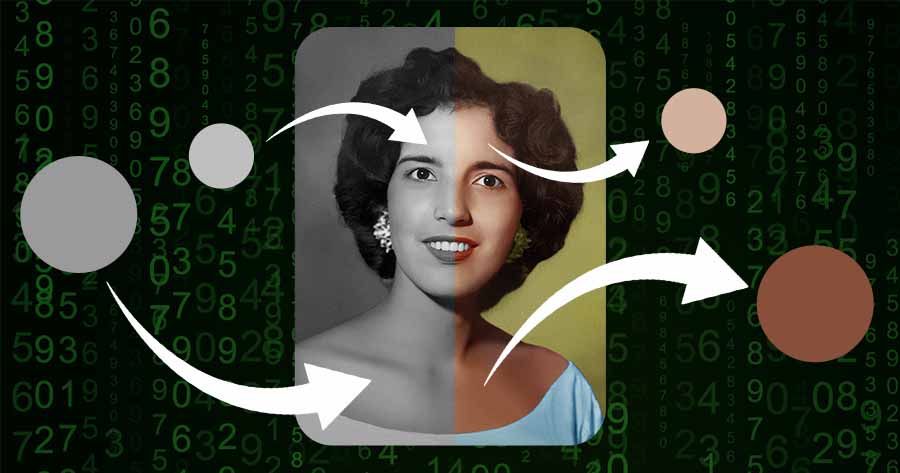
The advantages of photo colorization are numerous. For starters, it allows us to connect with our past on a deeper level. Colorizing vintage photos allows us to connect with the people and events depicted in them, making them feel more relatable and tangible. This is especially true when looking through family albums or researching the history of a community or culture.
Colorization also improves the visual appeal of these photographs. The use of hues and shades creates a visually appealing experience that draws the viewer’s attention and provides a new perspective on images that might otherwise appear distant and outdated. The vivid colors elicit emotions and make the depicted scenes feel more immersive.
Photo colorization also aids in the preservation of cultural heritage. We can help future generations pass down stories and experiences by transforming old photographs into colorful renditions. This procedure ensures that our ancestors’ legacies and accomplishments are not lost to the sands of time.
Q: How much does photo colorization cost?
Photo colorization services vary in price depending on the provider, the number of photos, and the level of restoration required.
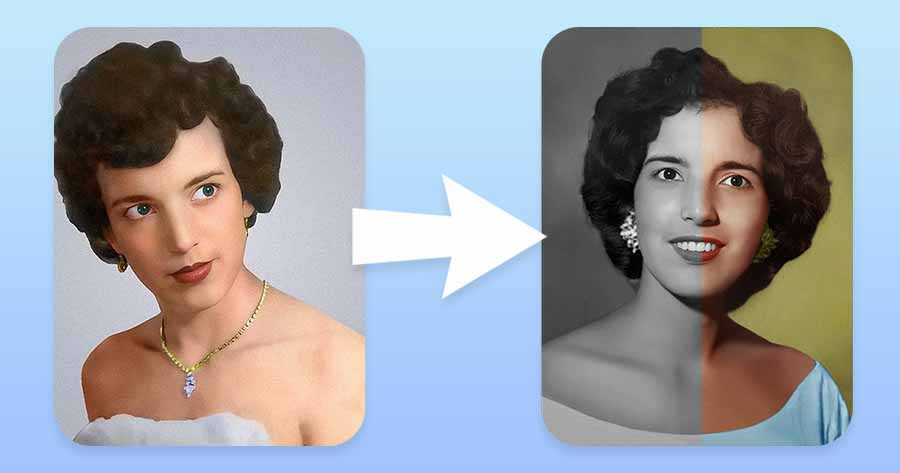
There are numerous pricing options available on the market. We examined 50+ photo colorization services to determine the average price:
- $100 or more, only around 1% of services
- $50-100 around 4% of services
- $25-50 around 26% of services
- $15-25 around 37% of services
- $10-15 around 12% of services
- $5-10 around 4% of services
- $5 or less, around 16% of services
Please keep in mind that we only looked at the prices of these services; we can’t easily calculate the relationship between colorization price and quality.
- As a general rule, services worth less than $5 usually produce results that are not worth the money.
- Services that cost $100 or more, on the other hand, often, but not always, produce a good-looking result, but they definitely overcharge you, a lot!
We offer affordable pricing options starting from $10.00 per photo. Our pricing is based on the level of restoration required for each photo, which is determined by our experts after a thorough evaluation.
Q: How long does it take to colorize a photo?
The time required to colorize a photo depends on various factors such as the quality of the original image, the level of restoration required, and the expertise of the provider.
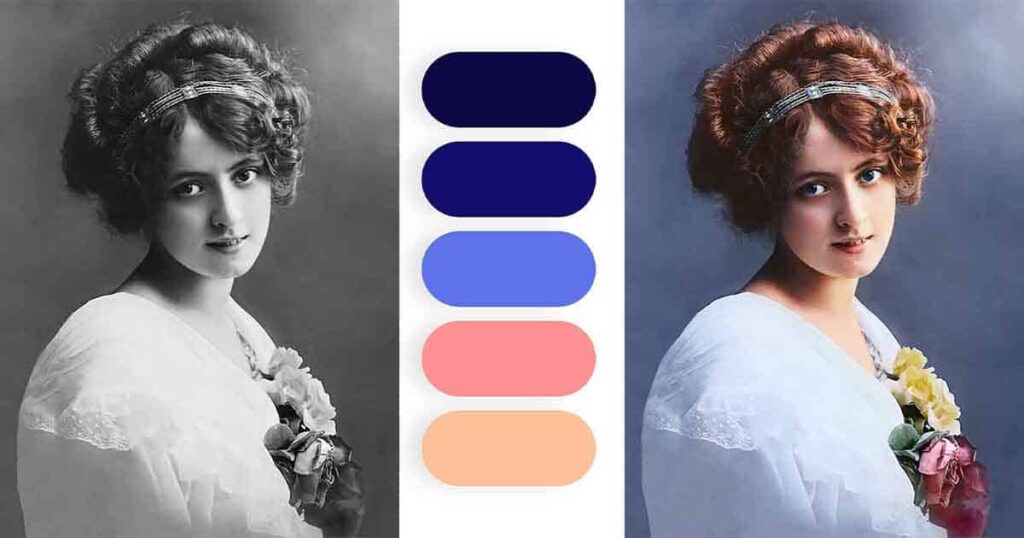
We strive to deliver high-quality results within 24-48 hours . However, complex restorations may take longer.
Q: What affects the quality and accuracy of the final colorized photo?
Several factors can influence the final colorized photo’s quality. It is largely determined by the skill of the individual or software performing the colorization process. Here’s a rundown of what to expect from colorized photographs:
Attention to Details: Quality colorization aims to preserve the fine details of the original photograph while adding accurate colors. However, some intricate details might be lost or inaccurately represented during the process.
Realism and Accuracy: Skilled colorization artist can add realism to a photograph, making it appear to have been taken in color. Color accuracy is critical for maintaining authenticity.
- If you don’t care about authenticity and prefer artistic colorization, the result will be much less accurate, but it will look much better overall!
Skills of Artist: Last but not least, the artist’s general level of skill. How good he is at finding the right colors using color theory and research, how accurate his moves are, and other aspects of his profile can all influence how good or bad the final product looks.
Don’t worry, at Rememorie we have only have skilled professionals who use their knowledge of color theory, research, references, and cutting-edge technology to produce high-quality results that exceed your expectations. We can provide you with amazing results for realistic, artistic, or mixed colorization styles because we restore 10+ photos every day!
Q: Questions About Our Photo Restoration Services
You should now have answers to all of your most important photo restoration and colorization questions! If you want to have your photos done by professionals, read these questions to find out how we can assist you!
- If you can’t find an answer to your question here, or if you want to inquire about specific photos, click here to get a free quote from our team!
Q: Can you provide examples of before-and-after photos you’ve restored?
While we don’t provide specific examples here, our website features a comprehensive gallery showcasing various restoration projects. This will give you a clear idea of the transformative effects our restoration techniques can achieve.
- Discover some amazing examples of our works on old photos before/after photo restoration and colorization
Q: Do you offer colorization services in addition to restoration?
Yes, we offer colorization services to breathe new life into black and white photos. Our colorization process is meticulous, and we strive to make the colors as accurate and natural-looking as possible.
- Here you can find the complete article about what is photo colorization and how it works
Q: What’s you turnaround time?
We usually restore and deliver digital files to you within 1-4 Days!
Please note that we me days, not just regular Business Days, since we work 7 days a week 365 days a year!
Are rush or expedited services available for urgent restoration needs?
Yes, we understand that some restoration projects may have urgent timelines. We offer rush and expedited services to accommodate your specific needs, ensuring a quicker turnaround time when required.
Transparency is important to us. The initial quote we provide covers the restoration work outlined in the package you choose. We strive to keep the process clear and straightforward without hidden fees.
- We don’t charge any hidden fees at the checkout
- We don’t add GST or VAT to your orders
- At the checkout expect to pay less, not more!
Q: What file formats do you accept for scanning and restoration?
We accept a variety of common file formats, including JPEG, PNG, TIFF, WEBP, PDF, GIF or any other format you have. These formats ensure compatibility and maintain the quality of your photos throughout the restoration process.
Pretty much any digital image format you have, just send us the file, we will figure other things out!
Q: Do you offer digital restoration-only services, or do you also handle physical photos?
We specialize in digital restoration and enhancement only. This means you can conveniently upload your scanned photos or digital files to our platform for restoration without the need to send physical copies.
We do not work with physical photos, so we do not restore printed photos or print and ship them to you; instead, we provide you with a digital file!
- This will save you time and money on shipping, while also lowering our carbon footprint!
- If you want to print your digital photo on paper, check out our article on the best online photo printing services in the United States!
Q: Do you offer different pricing tiers based on the level of restoration required?
Yes, we offer pricing tiers that cater to different levels of restoration complexity. This ensures that you’re only paying for the services you need, making the restoration process both cost-effective and customizable.
Q: Do you offer any discounts or packages for multiple photos?
Yes, we offer discounts and packages for multiple photos to make your restoration experience more affordable when restoring multiple cherished memories.
- If you’ve read this far, we have a gift for you: at checkout, use coupon SAVE10 to receive 10% off your entire order; thank you for your interest!
Q: Can you provide a detailed quote for my specific restoration project?
Absolutely, once you provide us with information about your photo and its restoration needs, we can offer you a detailed quote that outlines the scope of the work and the associated costs.
Q: What payment methods do you accept?
We accept a variety of payment methods, including major credit and debit cards, PayPal. If you want to pay via any other payment method – just let us know, possibly we an accept it!
Q: What is your cancelation and refund policy?
We understand that circumstances can change. Our cancellation and refund policy is designed to provide flexibility while ensuring that both parties are treated fairly.
For more information, please contact our customer support team. You can find more information about our refund and cancellation policy on our Terms and Conditions page.
Q: How do I submit my photos for restoration?
Uploading your photos for restoration is easy. Our online platform allows you to securely submit your digital files or scanned images directly through our website.
- Before ordering, we strongly recommend that you get a free quote
- You can order photo restoration via the form on this page
Q: Can I specify any preferences for the restoration process, such as color choices or corrections?
Absolutely, your preferences matter to us. When you submit your restoration project, you can include any specific instructions or preferences you have regarding color correction, enhancements, or other details.
Q: What type of communication can I expect during the restoration process?
We prioritize clear and timely communication. You can expect updates on the progress of your restoration project and we’re always here to address any questions or concerns you may have.
Q: Will I receive both the restored digital files and the physical photos (if applicable)?
Since we operate solely online, we provide you with high-quality digital files of the restored photos. We do not handle physical photos in our restoration process.
Q: What resolution and quality can I expect for the restored photos?
Our aim is to provide you with the highest quality restored photos. You can expect crisp, clear images suitable for viewing on screens and sharing digitally.
Q: Are the restored photos suitable for printing or enlarging?
Absolutely, our restored photos are suitable for printing and enlarging. We ensure that the resolution and quality meet the standards for various printing sizes.
Q: Can I request revisions if I’m not satisfied with the results?
Your satisfaction is important to us. If you have specific feedback or if there’s anything you’d like adjusted, we’re more than happy to make revisions to ensure you’re delighted with the final result.
Q: What steps do you take to ensure privacy and confidentiality of my photos?
We take privacy and confidentiality seriously. Your photos are securely stored and only accessible by our team of restoration artists. We do not share or use your images for any purpose beyond restoration.
Q: Do you offer any preservation advice for the restored photos?
Yes, we provide guidance on how to store and preserve your restored photos to ensure their longevity. Proper storage and handling can help maintain the quality of the images over time.
Q: Are there any restrictions on how I can use the restored photos?
There are no restrictions on how you can use the restored photos. They are yours to cherish, share, and print as you see fit.
Q: Can you provide references or customer testimonials?
Certainly, we can provide references and showcase customer testimonials to demonstrate the satisfaction of our previous clients. Their experiences speak to the quality of our services.
Q: How do I know when my restoration project is complete?
Once your restoration project is complete, we will notify you via email. You can then review the restored photos and provide feedback or request any necessary revisions.
Q: What is your policy on storing customer files and data?
We have strict data privacy policies in place. Your files are stored securely and are only accessible to authorized personnel for the purpose of restoration.
Q: Is there a satisfaction guarantee for your services?
Yes, we stand by the quality of our work. If you are not completely satisfied with the restoration, we will work with you to make it right.
Q: What is the process for ordering additional copies of the restored photos?
If you would like additional copies of the restored photos, simply let us know, and we can provide you with the necessary digital files for printing or sharing.
Q: Do you offer digital download of the restored photos?
Yes, we offer the option to digitally download the restored photos, making it convenient for you to access and use them as needed.
Q: Are there any restrictions on the types of photos you can restore?
We specialize in restoring a wide range of photos, from vintage family pictures to portraits, landscapes, and more. There are generally no restrictions on the types of photos we can restore, as long as they are in digital format or can be scanned.
Q: How do I contact your customer support if I have questions or concerns?
Our customer support team is readily available to assist you. You can reach out to us through our website, and we’ll be happy to address any questions or concerns you may have.
Q: Do you offer any preservation tips to prevent further damage to my photos?
Certainly, we provide preservation tips to help you protect your restored photos from further damage. These tips include recommendations on storage, handling, and display.
- You can also read article about how to store photos and avoid damaging them, for free!
Any questions left unanswered?
We tried to answer everything in this article, but maybe you have some specific questions about specific images? You can ask us for free! Click the button below to receive a free quote from our experts regarding your photos!
Get a free quoteSubscribe to Newsletter
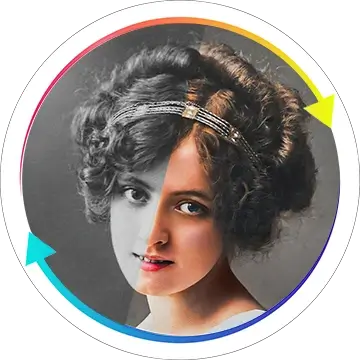
Get a Free Quote
✔ Professional Photo Restoration
✔ Fast Delivery (1-4 Business days)
✔ Low Price Without Taxes or Fees
✔ Unlimited Free Revisions
✔ Satisfaction Guarantee
LEARN MORE
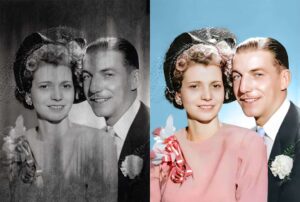



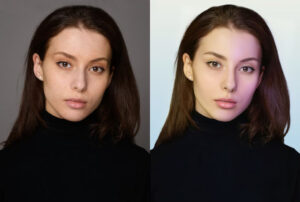





What is Photo Restoration and How Does it Work? 2025
Want to know what photo restoration is and how does [...]
Dec
How To Colorize Black & White Photos: Photoshop Tutorial 2025
Detailed tutorial to teach you how to colorize your black [...]
Jun
Top 10 Best Online Photo Printing Services in 2025 for US
Discover the top 10 online photo printing services in 2023! [...]
Apr
FAQ – Photo Restoration and Colorization Services
Do you have any questions about your old photographs? This [...]
Aug
5 Benefits of Old Photo Restoration: Protect Your History
Do you want to explore the history of your family? [...]
Jan
Types of Damage for Photo Restoration: What Can Be Restored?
Learn everything you need to know about types of damage [...]
Jan
Walgreens Photo Restoration Services: Is There Anything Better?
Walgreens is a well-known pharmacy chain that offers old photo restoration services. [...]
Apr
How to Pick the Best Online Photo Restoration Service?
Are you looking to restore old and damaged photos? We [...]
Jan
The History of Photo Restoration 2025
Discover the rich history of photo restoration, a practice dating [...]
Dec
Can AI Really Restore Old Photos? 2025
Can AI really restore your photos at home, without any [...]
Dec
Cracks in Old Photos: How to Save Your Precious Pictures?
Discover expert tips and solutions to restore old photos damaged [...]
Jul
How to Colorize Black and White Photos Using AI for Free – 2025
Want to learn how to colorize your black and white [...]
Jun